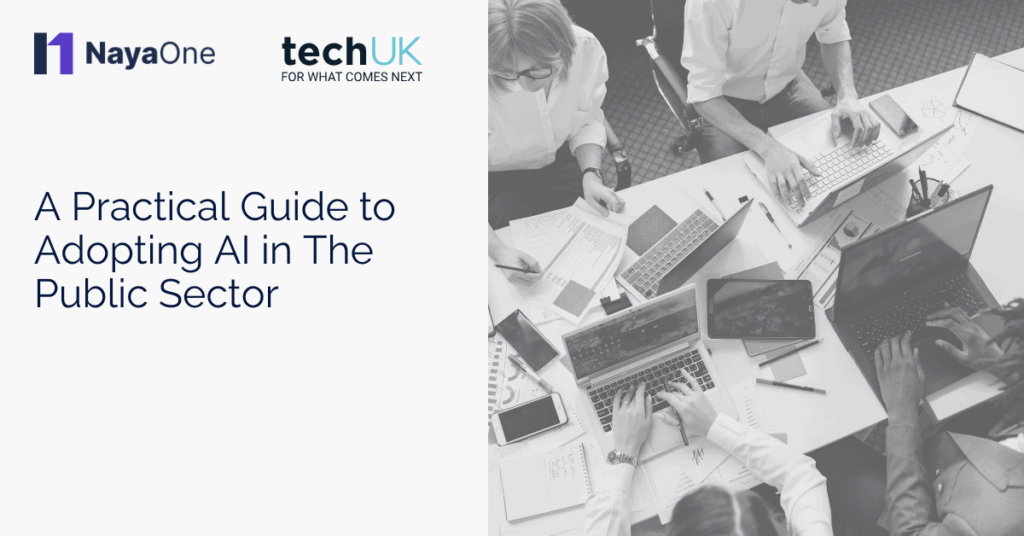Artificial intelligence (AI) has the potential to transform public services – from reducing admin burdens to improving delivery at the front line. But unlocking that potential requires more than ambition. It demands safe, structured ways to test AI tools, assess their impact, and move from proof-of-concept (PoC) to delivery.
The UK government has set a clear direction through the AI Opportunities Action Plan and the Blueprint for Modern Digital Government. Now comes the harder part: execution.
At NayaOne, we believe the public sector needs trusted environments, shared governance frameworks, and the ability to test and scale what works – together, not in isolation.
1. Safe, Realistic Testing is Essential
According to McKinsey, only 20% of public sector AI initiatives move beyond PoC. One major blocker is the lack of realistic, secure environments to test tools before rolling them out into live systems.
Sandbox environments help solve this by simulating real-world conditions – using synthetic data, governance guardrails, and production-like workflows. They let teams explore not just what AI can do, but how it performs when layered against legacy systems, public sector standards, and cross-departmental constraints.
This isn’t just a technical requirement. It helps policy, compliance, risk, and delivery teams get involved early – building trust and speeding up decisions.
The prize is considerable. The Tony Blair Institute estimates that AI could save £8 billion annually in local government alone – the equivalent of 380 million staff hours per year.
2. Scaling Requires Governance, Not Just Tech
Technology enables AI – but governance determines whether it can scale responsibly. In Capgemini’s 2024 public sector survey, 74% of leaders cited unclear governance frameworks as their top barrier to adoption.
Sandboxed PoCs allow teams to test governance and delivery at the same time, including:
- How models are trained and versioned
- Whether decisions are explainable and auditable
- What risks are introduced, and how they’re flagged
- How access is controlled across departments
This level of testing is critical to scaling AI safely in a public context. Bain and DSIT estimate that AI and digital efficiencies could unlock £45 billion per year, with £36 billion of that from reduced administrative effort alone.
3. Regional Collaboration: A Model for Multi-Institution Testing
A central bank recently developed an internal AI chatbot to collaborate with other public service organisations. But making it work across multiple institutions – each with their own governance, tech stack, and risk posture – presented a challenge.
Using NayaOne’s sandbox, they created a secure environment where each participating institution could:
- Access a central codebase via GitLab
- Use Microsoft EntraID to provision users
- Leverage OpenAI, Anthropic, and Databricks for experimentation and development
- Spin up dedicated sandbox environments to test and customise their own chatbot instances
This allowed both executives and engineers across the region to test, tailor, and validate the tool in parallel – without interfering with each other’s progress or duplicating effort.
It’s a strong example of how shared infrastructure can enable multi-agency innovation – even across borders and regulatory frameworks.
4. Government PoCs Already Delivering Value
Across the UK, government-led AI PoCs are beginning to show measurable results.
Central Government: DSIT’s Humphrey Toolkit
This includes Minute (for meeting transcription) and Consult (for analysing public feedback). In trials involving 20,000 civil servants, users saved 26 minutes per day – equal to two weeks of productivity per year. In Scotland, Consult saved 75,000 workdays and £20 million in admin costs.
Local Government: Real-World Innovation
- Newham Council and the University of East London launched a Centre for AI focused on social care and housing
- Hertfordshire County Council is testing an AI-powered robot to detect road defects before potholes form
- Hammersmith & Fulham is using AI for fly tipping detection, infrastructure monitoring, and remote asset diagnostics in public housing
These aren’t speculative pilots – they’re focused PoCs solving real operational issues.
5. From Fragmented PoCs to National Strategy
Isolated PoCs can deliver results – but the real opportunity lies in a shared, national approach. The FCA’s Supercharged Sandbox, supported by NVIDIA and NayaOne, shows what this can look like: a secure, governed environment that supports innovation without compromising regulatory oversight.
To move from experimentation to scaled delivery, government bodies need:
- Trusted test environments with shared access
- Clear standards for risk, transparency, and procurement
- Ecosystem collaboration across departments, vendors, and researchers
Organisations like OFGEM are already building sandboxed AI platforms to support cross-team learning, capability building, and shared delivery frameworks – helping the public sector build once and reuse broadly.
Conclusion: From Exploration to Execution
AI won’t replace the public sector – but it can help it become more responsive, resilient, and resource-efficient.
That shift is already happening – from concepts to working PoCs, from siloed pilots to shared platforms. With the right infrastructure in place, the public sector can scale what works, avoid duplication, and move faster with confidence.
If you’re exploring how to set up structured AI testing environments in your organisation, there are models and frameworks already in place worth learning from.
Exploring GenAI adoption at your institution?
Join a 30-minute session to assess your current posture and explore how structured validation could support your roadmap.
Download our GenAI whitepaper: Is Your Bank AI-Ready?






